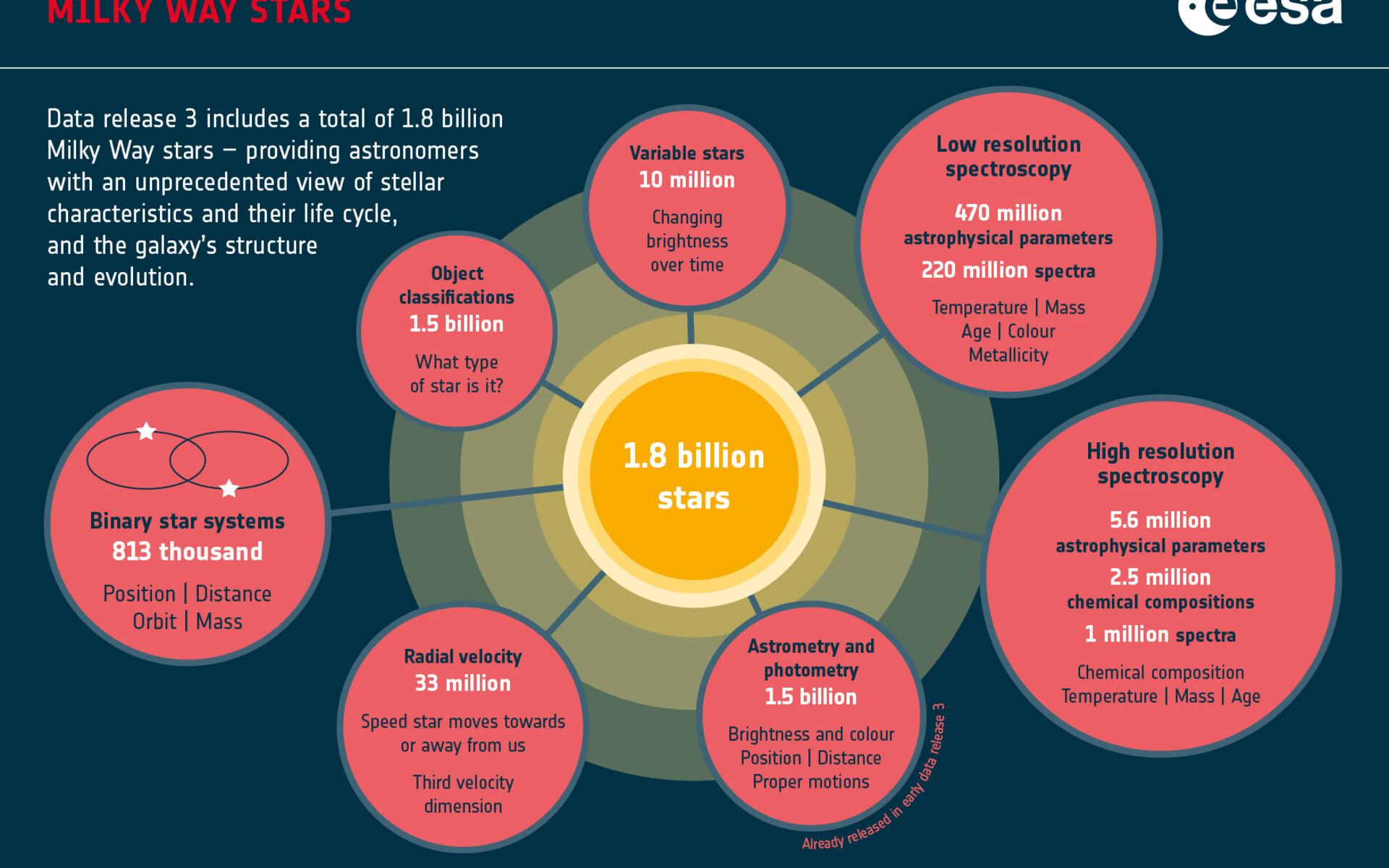The European Space Agency’s (ESA) Gaia Observatory is a mission dedicated to astrometry, a branch of astronomy where the velocity and proper motion of celestial objects are measured to learn more about the formation and evolution of the cosmos. For the past eight and a half years, this space-based has been studying over two billion objects in the Universe. This includes stars in the Milky Way but also planets, comets, asteroids, and distant galaxies. This information obtained by this mission will be used to create the most-detailed 3D catalog of the Milky Way ever.
Since the mission began in 2013, two major catalogs have been released, known as Gaia Data Release 1 and 2 (DR1 and DR2), accompanied by a smaller data set – Early Data Release 3 (EDR3). On June 13th, Gaia’s third full catalog (DR3) will be released, containing new and improved details for the two billion celestial objects it has been observing. The release will coincide with a virtual press event hosted by the Gaia Data Processing and Analysis Consortium (DPAC), where featured speakers will share the significance of this latest release and how it revolutionizes our understanding of the galaxy.

The Gaia DPAC consists of expert scientists and software developers from Europe and around the world. In collaboration with the ESA, the Consortium is responsible for processing and analyzing Gaia’s data and producing the Gaia Catalogues. The press event will take place on Tuesday, June 12th, from 04:00 to 05:00 EDT (01:00 to 02:00 PDT). The event will feature a panel of speakers, which will include:
- Josef Aschbacher – ESA Director General
- Günther Hasinger – ESA Director of Science
- Timo Prusti – Gaia Project Scientist
- Anthony Brown – Gaia Data Processing and Analysis Consortium Chair
- Antonella Vallenari – Gaia Data Processing and Analysis Consortium Chair Deputy Chair
- Conny Aerts – Professor at Leuven University and member of the Gaia Collaboration
The DPAC has also organized a series of local events in 13 countries and many languages (English, French, German, Dutch, Spanish, and Italian). The event will be live-streamed via ESA WebTV, and media representatives are encouraged to download the Gaia DR3 Media Kit in advance. A full overview of the DR3 events can be found here.
This latest data set (collected from July 25th, 2014, to May 28th, 2017) contains improved information on the many stars Gaia observed during its mission, most of which consists of newly-released spectroscopy that revealed the chemical composition, temperature, color, mass, and age of these stars. The release also included radial velocity measurements for 33 million stars, five times more than DR2. Also new in this dataset is information on thousands of Solar System objects (like asteroids and moons), millions of galaxies and quasars outside the Milky Way, and the largest catalog yet of binary stars in the Milky Way.

Equally important is the interstellar medium, the region of space between stars that is largely made up of trace amounts of dust and gas. By mapping this, astronomers can also learn more about stellar motion, star formation, and how our galaxy evolved over billions of years. This is where the Gaia All-sky Dust Map comes into play, a three-million-pixel map based on the proper motion and velocities of 470 million stars. Altogether, the DR3 contains several record-breaking features. These include:
- The largest-ever low-resolution spectroscopy survey
- The largest-ever radial velocity survey
- The largest-ever collection of astrophysical data for stars in the Milky Way For many classes of variable stars: largest survey ever
- The most comprehensive binary star survey in the past two centuries
- The highest-accuracy survey of asteroids that contains data on their compositions and orbits
- The first space-based all-sky survey of quasars and galaxies in the Local Universe
- A photometric survey of the Andromeda Galaxy
A series of 50 papers are also pending, nine of which are specifically dedicated to demonstrating the great potential of this latest Gaia data release. Astronomers expect that these new measurements will allow them to reconstruct the Milky Way’s 13.61 billion year history and its future evolution. They also anticipate that the data will improve our understanding of the life cycle of stars and the Solar System’s place in the Universe. This has always been the greater purpose of the Gaia Observatory: to answer the deeper questions of cosmology and existence.
Further Reading: ESA

